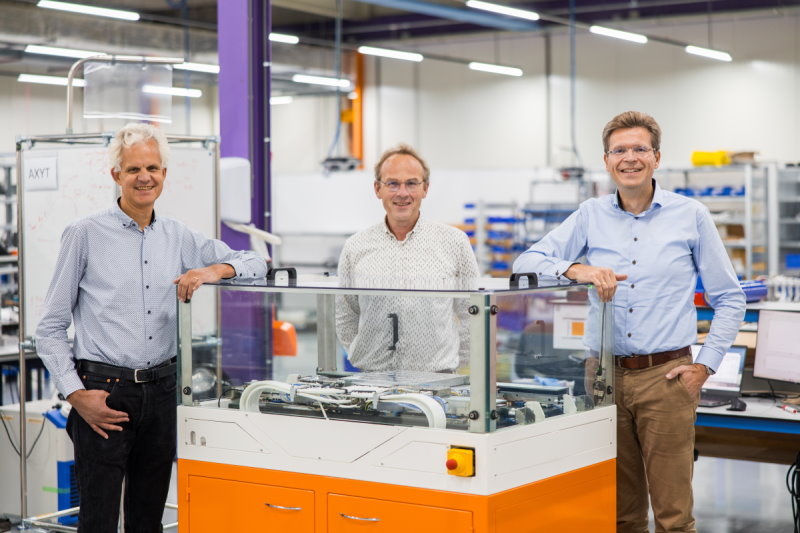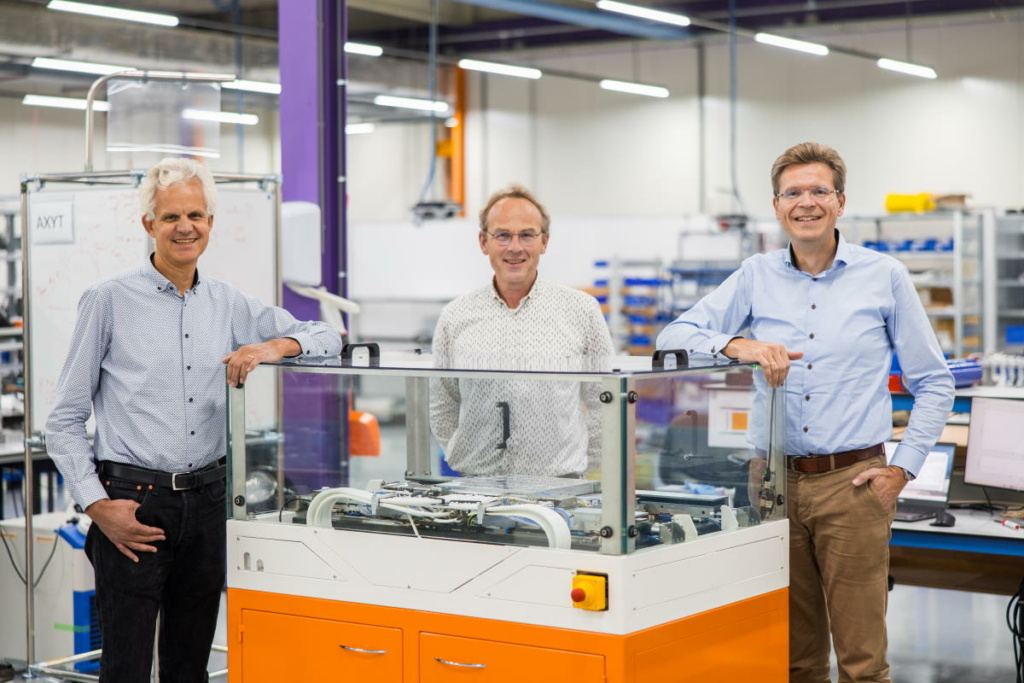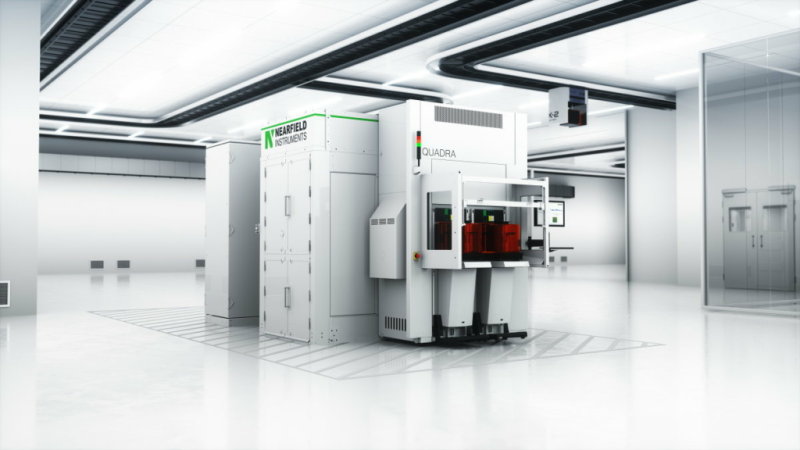In the major European IMOCO4.E project, coordinated by Sioux Technologies and concluded last month, work was done on intelligent control systems for various sectors, from medical technology to mining. Building blocks were developed and tested for communication, sensorics and vision, motion control, digital twins and AI applications. “Each application requires customization, so we didn’t exchange any specific products. We did develop a reference architecture. All participants used this for their products. Very inspiring.”
Industry 4.0 is about organizing production processes more intelligently, from individual machines that deliver better quality and higher yields to complete factories that operate more efficiently and in a more coordinated manner. This requires intelligent control systems that cover the various levels in a production chain. This was worked on in the European project IMOCO4.E.
The coordination was in the hands of Sioux Technologies. “We were already involved in the i-Mech project. That was about a mechatronics platform and a harmonized definition of the various control layers for developing smarter machines”, explains Arend-Jan Beltman. “Discussions about a follow-up resulted in a proposal that scored well in Brussels. We were told that it would help if a domain-related company and not, for example, a university would coordinate the project. That’s how we got involved.” What also convinced Sioux was that many partners from i-Mech participated again, reports Edwin Langerak. “Only a few of the thirty dropped out.”
The previous project, i-Mech, mainly focused on the instrumentation layer, the sensors and actuators required for the control. “We realized that the overlying software layers were also important,” says Hans Kuppens. “Coordination would cost us a lot of effort, but the project could also yield a lot. Sioux works as a consultant and implementation partner for various companies, each with their own software framework, but we always try to structure existing and new software well and reuse pieces of software. The project could deliver that kind of reusable technology.”
Low-hanging cloud
Beltman distinguishes four abstraction layers for control. The top one, layer 4, is that of supervision – in the cloud – of the entire production process, based on objectives and information from the process. This supervision results in the desired behavior of machines and factories – that’s the third layer. This behavior is then translated into control technology, in particular motion control, in layer 2. In the bottom layer, layer 1, that of instrumentation, control is realized by actuators and sensors, which in turn send data upward. “I call it supervision of behavior that takes concrete shape through the interaction of control technology with physics, the physical processes in equipment,” Beltman summarizes. “Something has to be set in motion or manipulated there.”
Not that everything has to go to the cloud for supervision. The IMOCO4.E project description features the provocative term “fog environment.” “That was new to me too”, Kuppens admits. “If you have data and applications on the internet, everyone has access. But companies often want to keep raw data within the confines of their factory, for example. Data processing is then done close to the ground in the “fog,” a low-hanging cloud. Only information from a higher abstraction level is sent to the cloud.” Does that fog limit visibility? “No, that’s not the intended term”, Beltman responds. “Supervision simply takes place closer to the devices and machines.”
IMOCO4.E was about developing a reference architecture for all abstraction layers, consisting of building blocks that are suitable for various applications in high-tech systems. Each building block included existing hardware, software and methods. There were ten in total, including smart control algorithms, path planning (navigation and collision avoidance) for autonomous systems, hardware platforms (SoC and FPGA) for smart control and signal processing, AI-based components for process control and cyber-security tools and trustworthy data management.
An example, as part of yet another building block, a real-time smart-control platform, is TSN. “That’s time-sensitive networking for real-time data transmission over Ethernet,” clarifies Kuppens. “With normal Ethernet, you have few guarantees about the throughput of your signals. TSN offers a guaranteed bandwidth with a guaranteed latency. That can be important for critical machine applications. Even in the event of a cable break, you have the guarantee that your packets will be forwarded on time, via a different route.”
Beltman adds: “TSN is an emerging communication protocol. One of the project partners has built an application with it to synchronize two devices remotely. That has yielded knowledge about what you can do with TSN and how far you can go with it. Other parties can now also use that knowledge in their projects.”

Diversity of pilots
Four pilots were defined for concrete implementation, three of which were led by a Dutch company. Sioux itself brought in the Tissector, which dissects tissue slices for analysis, for example in cancer diagnostics. The aim was to investigate methods to improve reliability, predictability and machine availability using simulation, visualization and digital twins.
Machine builder ITEC, spun off from the Nijmegen chip manufacturer Nexperia, introduced its new ADAT3-XF production machine. The aim was twofold: improving accuracy and throughput speed in semiconductor production and increasing operational predictability at the level of individual machines, entire production lines and complete factories. Philips worked on methods to accelerate the development and commissioning of new medical intervention systems. Finally, the fourth pilot was from the Finnish mining company Normet, which wanted to automate the placement of explosives and thus make it safer.
The synergy between the different pilots was not so much in the physical application they were working on, says Kuppens. “It was about the inspiration back and forth. You all have the same kind of problems that you try to find solutions for. The partners all use building blocks themselves, like a kind of technical Lego, each in their own way, and then they learn from the others how they do it.”
Beltman: “With partners, you carry out a technical exercise to conceptually cover a process control from instrumentation to the cloud. The experiences and the connections between partners that arise in this process, no one can take them away from you. Every application requires customization, so we didn’t exchange any concrete products. We did develop a reference architecture and within that, all participants developed building blocks for their own business. We’re proud that, despite the diversity of pilots and partners, we’ve achieved many tangible results. It wasn’t a ‘theoretical’ exercise.”
Whether Sioux will recoup its substantial investment in the project remains to be seen, according to Langerak. “As a service provider, we do projects for customers and, unlike ITEC, we don’t have our own product that we’ve improved with IMOCO4.E. We’ve invested in a reusable reference architecture, which enables us to accelerate our customers’ creation processes.”
At Sioux itself, this reference architecture has already landed in a concrete application, the aforementioned Tissector. Kuppens: “We had developed things in i-Mech that we’ve now been able to connect to the cloud and the behavioral layer. When we now log on to the cloud, we have dashboards and graphs that actually show what’s happening with the system from our pilot. We didn’t have that in this form yet.”
Inspiration
The final meeting of the project took place on 15 October in Limerick (Ireland), at Analog Devices. According to Beltman, the participation of that company illustrates well how the project worked. “They make chips for real-time vision cameras, for example, with which they’re on the instrumentation layer. But where in the past you had to make solutions for the sensor issue with all sorts of discrete components, they now come up with chips that already have these. By participating in a project like this, they got inspiration for that, for example about new protocols or special interfaces.”
The knowledge and experience gained are now shared and applied by the partners in projects. In the meantime, a number of them are already working on a next European project, notes Langerak. That will focus on the semiconductor industry, in the wake of the Chips Act, which aims to strengthen Europe’s competitive position with large-scale investments. “We’ve again helped write a proposal, which was already well received in the first round.”
However, if the proposal is accepted, Sioux won’t coordinate the new project, Beltman assures. “Our commitment in IMOCO4.E was to align all parties, each with their own agenda, to achieve results, in the form of architectures and methods, that transcend individual interests. That required a great deal of effort and after six years, it’s enough, although it has also given me a lot of energy. Because I’m convinced that European collaboration is the way to progress.”
This article was written in close collaboration with Sioux Technologies.



